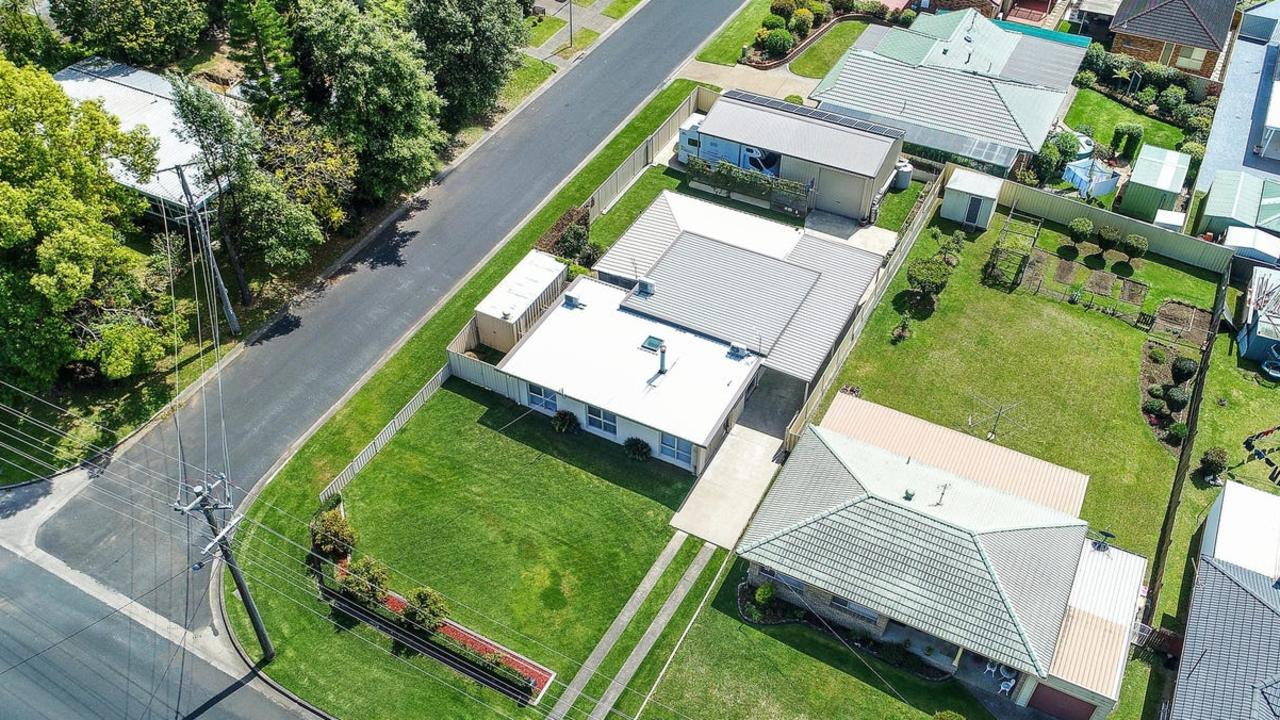Forest fighters: Meet the Shoalhaven residents battling to end NSW native forest logging
An isolated South Coast community have found themselves on the front line of the fight to end native forest logging in NSW. Meet the faces behind the movement here.
The South Coast News
Don't miss out on the headlines from The South Coast News. Followed categories will be added to My News.
After battling to save their outlying homes from the devastating Black Summer bushfires, residents of a secluded South Coast township have again banded together to bring the fight to end native forest logging in NSW all the way to state parliament.
The remote township of South Brooman, north of Batemans Bay, was hit hard by the 2019/20 blazes, with hundreds of hectares of native forest lost in the deadly firestorms that levelled local homes and obliterated populations of threatened species, including the rare Greater Glider.
Before those fateful few months, resident Murray Tensing said his secluded property was a haven for local bird and bat species.
The 60-year-old has resided in the deep woodland for more than 20 years and keenly tracks the myriad animal species after a chance childhood encounter with a local lizard while travelling through the area sparked his passion for South Brooman.
While his forest home was lost to the Black Summer blaze, Mr Tensing said nearby rainforest was saved.
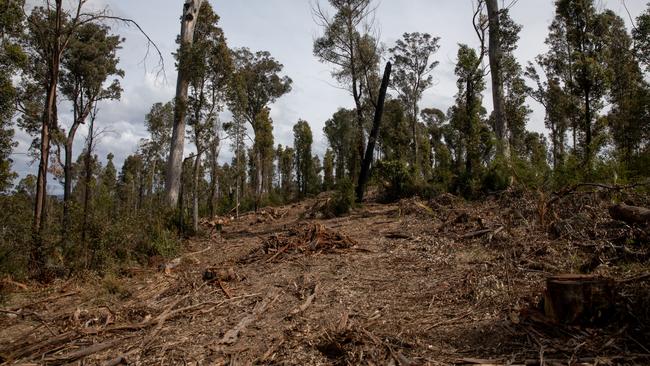
And yet in the wake of bushfires and the quick resumption of the state-funded Forestry Corporation for NSW’s (FCNSW) native forest logging operations in the area mere months after the last fires were extinguished, few animals had returned – including Mr Tensin’s beloved glider.
“The valley was silent after the fires,” Mr Tensing said.
“The animals came down to the rainforest to escape the fires, and when they reappeared it was all blacked out in front of them.
“A lot of them have now disappeared: the last glider I saw was six months ago.
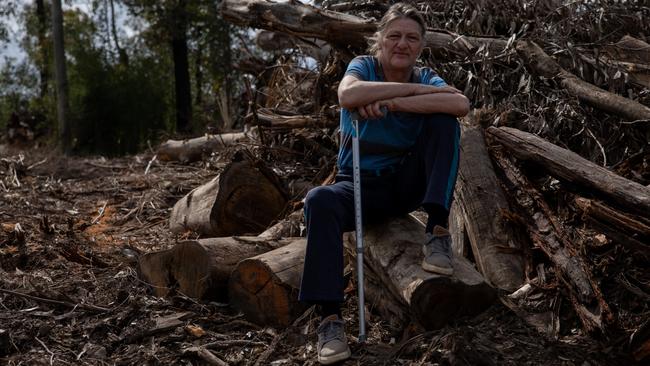
“They have nowhere to go. Its heartbreaking.”
Mr Tensing is not alone in his frustration.
Many of South Brooman’s 21 permanent residents have spoken out against not only the devastation dealt by the Black Summer fires, but the resumption of logging in the area. Under FCNSW’s May 2022 plans, as much as 3500ha is earmarked for logging operations.
Brooman State Forest Conservation Group activist Joslyn can der Moolen said most of those trees will end up as saw logs, according to FCNSW data, with as much as 16 per cent being used for firewood. About 16 per cent will be used as pulp and low-quality logs, respectively.
Ms Moolen resides in nearby South Durras and became involved with the Brooman group in March 2022.
Unlike in Brooman, Ms Moolen said the Murramarang National Park outside of Durras, which was handed over to NSW National Parks in 2000, was protected against logging and was a haven for flora and fauna. She wanted to see that extended to residents in South Brooman.
“I’m privileged to be surrounded by protected forest and the residents in Brooman and Shallow Crossing want to see the same,” she said.
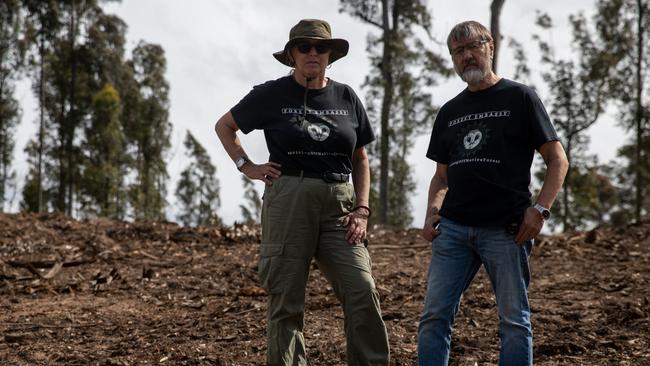
“The Environmental Protection Agency have rules because some of the trees in the area are unburnt, with surviving wildlife, and none of that should be logged. Every tree with a hollow should also be protected. That‘s a key concern for locals.”
FCNSW has faced increasing backlash in recent months with the EPA and NSW Land and Environment Court handing the agency hundreds of thousands of dollars worth of fines for its operations on the South Coast alone, including in the Eurobodalla and Lower Shoalhaven.
In June, FCNSW was slapped with a $15,000 fine, the largest available to environmental regulators for such an offence, following the alleged felling of hollow bearing trees in Brooman State Forest, which are protected under post-bushfire Site Specific Operating Conditions.
In a statement to The South Coast News in June, an FCNSW spokesperson said the fine related to only a single tree.
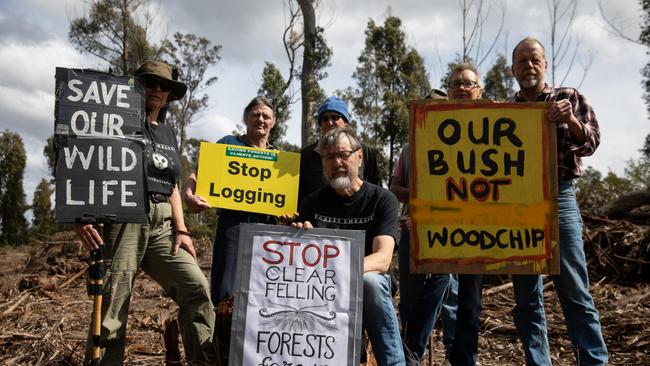
The spokesperson said the agency disputed the EPA’s decision, and was considering legal action.
For Ms Moolen and the residents of South Brooman, “slap on the wrist” fines weren’t enough.
“The forest is being hammered, not protected,” Ms Moolen said.
“According to advice from the NSW Natural Resources Commission report, 75 per cent of Brooman State Forest should be protected
“Instead Forestry have eight compartments earmarked for logging, which will be sent to the chip mill in Eden”
The petition would see all operations halted immediately, with a plan put in place to transition to plantation-based logging.
Less than a week before submissions closed, the petition passed its target of 20,000 signatures after an eleventh-hour surge with support from a myriad of local groups across the state, including Friends of Forest Mogo co-founded by Ms Moolen, as well as Wires and World Wide Fund for Nature Australia.
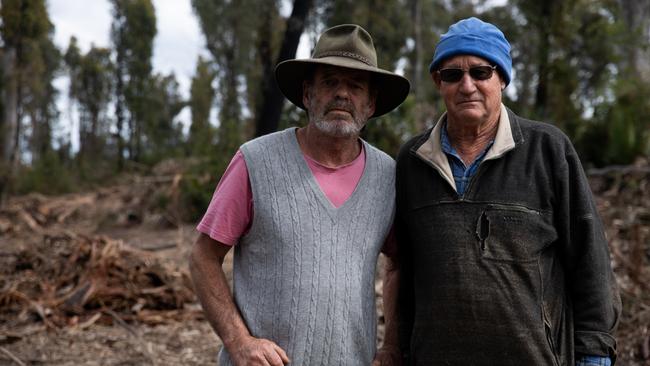
“The leaders of the state government are elected by the people,” Ms Frank said.
“And, the people are saying they want to see change to the way logging is done in NSW.”
The petition was due to be presented by South Coast member Shelley Hancock on September 15, when activists planned to gather outside of parliament, but was postponed due to Queen Elizabeth II’s death.
Ahead of the hearing, Ms Frank and Ms Moolen are hopeful that after decades of inaction the NSW Government will follow the lead of the Labor-led states of Victoria and Western Australia which have both signalled a phasing out of logging in lieu of plantations.
Back on the ground in Brooman, locals agree plantation farming would protect jobs and claim the anti-logging movement goes beyond politics.
“I’m no greenie,” resident Bob Chapman said.
“But, climate change is the biggest issue. It’s soul destroying nothing is being done.”
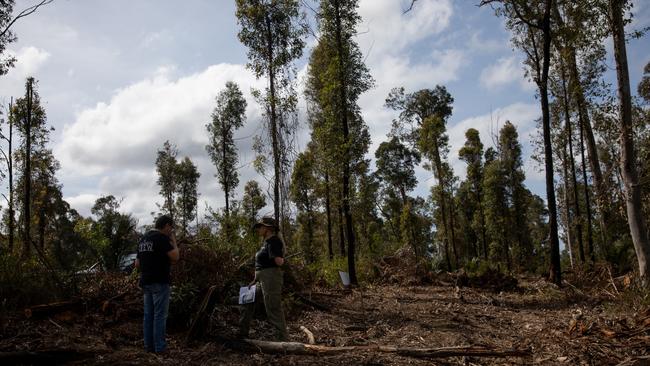
Mr Chapman spoke with The South Coast News from a patch of felled woodland nearby to his remote woodland home. The presence of logging there is unmistakeable: the sound of crashing machinery permeates the forest and the area is littered with debris left behind.
“They say we should be planting trees for every one we take, but how are we going to catch up to this,” he said.
“The speed with which these blokes go through you and rip the guts out of the forest with not a lot of regard for the topsoil – the ecosystem –, it’s just a bit beyond belief when you get on the ground and look at it.”
Having fought to save their homes in 2019/20, Mr Chapman and many of the Brooman residents were also fearful of the impact that Forestry operations had on the health of the forest, and said it increased the fire risk.
“They used to burn the debris, but they don’t anymore. Not since the fires,” Mr Chapman said.
“So, it’s like a forest full of kindling.”
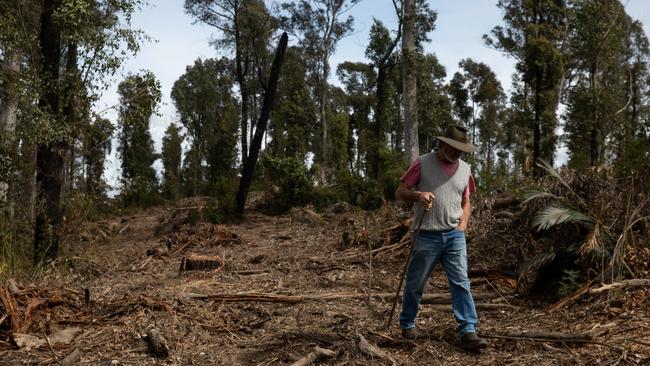
In a statement, a Forestry Corporation of NSW spokesperson said native forest timber harvesting was heavily regulated to balance the community’s need for timber with protecting important environmental features on the forest landscape.
“Since the 2019-20 bushfires Forestry Corporation has adopted additional environmental safeguards above these requirements and these measures remain in place today,” the spokesperson said.
“South Brooman State Forest has been a managed forest for more than 100 years, which means that for more than a century renewable timber has been continually harvested from parts of this forest and each time the forest has been regrown.
“During harvesting operations, each tree can produce a range of renewable timber and wood products and the parts of the tree that cannot be used such as the tops of trees and branches are known as residue. As required, Forestry Corporation will use fire following a harvesting operation to aid regeneration of the forest and to manage fuel loads.
“Branches and tree heads are also made available for the community to collect as firewood under a permit system. Since the 2019-20 bushfires, the re-introduction of fire into the forest requires careful planning, management and timing to ensure a positive forest health outcome and post-harvest burns have been limited in line with environmental considerations.”




